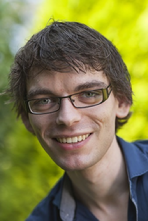 In this thesis programmable quantum interference is described and demonstrated. This occurs in multichannel optical networks within opaque scattering media. ‘An exciting feature is that, because of the unavoidable losses within these media, new freedom is introduced as well,’ Tom Wolterink says. ‘Because of this freedom, programmable linear optical networks are actually possible.’
In this thesis programmable quantum interference is described and demonstrated. This occurs in multichannel optical networks within opaque scattering media. ‘An exciting feature is that, because of the unavoidable losses within these media, new freedom is introduced as well,’ Tom Wolterink says. ‘Because of this freedom, programmable linear optical networks are actually possible.’
Even more so: this can be achieved without actively tuning the network itself. ‘We introduced a method to program by phase modulation of the incident waves,’ Tom says. ‘The functionality of this method is verified here, using interferometric techniques.’
Future applications are likely in quantum information processing, and are now already realized in innovative secure strategies for highly sensitive communication protocols. ‘Because of the unique opaque materials involved and only the minutest photon-energy required, information encryption and decryption is 100% secure, as no initial shared secret for authentication is needed,’ Wolterink says. ‘Further, quantum interference between a large number of channels offers various attractive future programming platforms.’
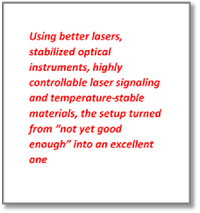
Tom Wolterink performed initial experimental work at the Optical Sciences Lab. ‘In our newly built lab, in the Meander Building, the original experimental design and setup was heavily optimized,’ he says. ‘Using better lasers, stabilized optical instruments, highly controllable laser signaling and temperature-stable materials, the setup turned from “not yet good enough” into an excellent one.’
Two groups
Tom took advantage of his project being embedded in two different groups: Laser Physics and Nonlinear Optics (LPNO), and Complex Photonic Systems (COPS). The collaboration started as a result of the strategic research orientation within MESA+ on Applied Nanophotonics, which encourages optics groups to collaborate more intensely. This resulted in a Vici-Grant, rewarded to COPS Professor Pepijn Pinkse. Wolterink’s PhD project also involves Professor Willem Vos and Professor Klaus Boller.
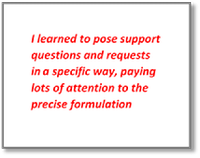
Tom: ‘Within this collaboration, I could always find someone to help me out. I learned to pose support questions and requests in a specific way, paying lots of attention to the precise formulation. Asking for spectrometry equipment to measure extremely low femtowatt signals, I discovered the needed equipment was actually available at MESA+ and that there were experts willing to help me out.’
Two photons
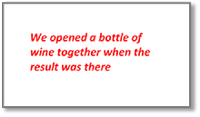
After three years of hard work Tom was able to demonstrate that two photons, targeted at a specific channel, actually “travelled together” when captured after passing the opaque medium (consisting of a multitude of different channels altogether). ‘We were looking for a line on the screen, to move a little more to one side,’ he says. ‘When this hoped-for result finally occurred we were sure about our measurements and carefully checked if the experiment was repeatable. We opened a bottle of wine together when the result was there.’
Sharing equipment and collaboration
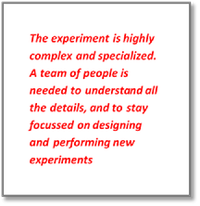
Though not a regular visitor of the Mesa+ Cleanroom, Tom felt free to use equipment and expertise available, for example the electron beam microscope. ‘Also the contribution of spin-off company LioniX was crucial,’ he says. ‘They provided us with the specified waveguides we came up with, to be used in our experiments. Also we collaborated with theoretical experts on cryptography and quantum computing at TU/e in Eindhoven. They were able to provide the theoretical framework for our experimental findings.’
Tom’s work on this exciting optics research area, will be taken forward by a PhD student and a post-doc expert. ‘This is a necessary collaboration,’ Tom points out. ‘The experiment is highly complex and specialized. A team of people is needed to understand all the details, and to stay focussed on designing and performing new experiments.’
Future plans
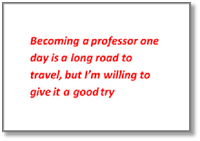 As to his future plans, Tom is planning to apply for a post-doc position abroad. ‘I would like to stay in academics,’ he says. ‘Becoming a professor one day is a long road to travel, but I’m willing to give it a good try: realizing my own research ideas; mobilizing talented people on promising research subjects; and helping young students and PhD’s to pursue a career in science. The post-doc position I am looking for should contain experimental challenges, comparable to my PhD work, perhaps on another area of research, for example on superconductivity. Here complex engineering, quantum effects and theoretical challenges are present as well.’
As to his future plans, Tom is planning to apply for a post-doc position abroad. ‘I would like to stay in academics,’ he says. ‘Becoming a professor one day is a long road to travel, but I’m willing to give it a good try: realizing my own research ideas; mobilizing talented people on promising research subjects; and helping young students and PhD’s to pursue a career in science. The post-doc position I am looking for should contain experimental challenges, comparable to my PhD work, perhaps on another area of research, for example on superconductivity. Here complex engineering, quantum effects and theoretical challenges are present as well.’
